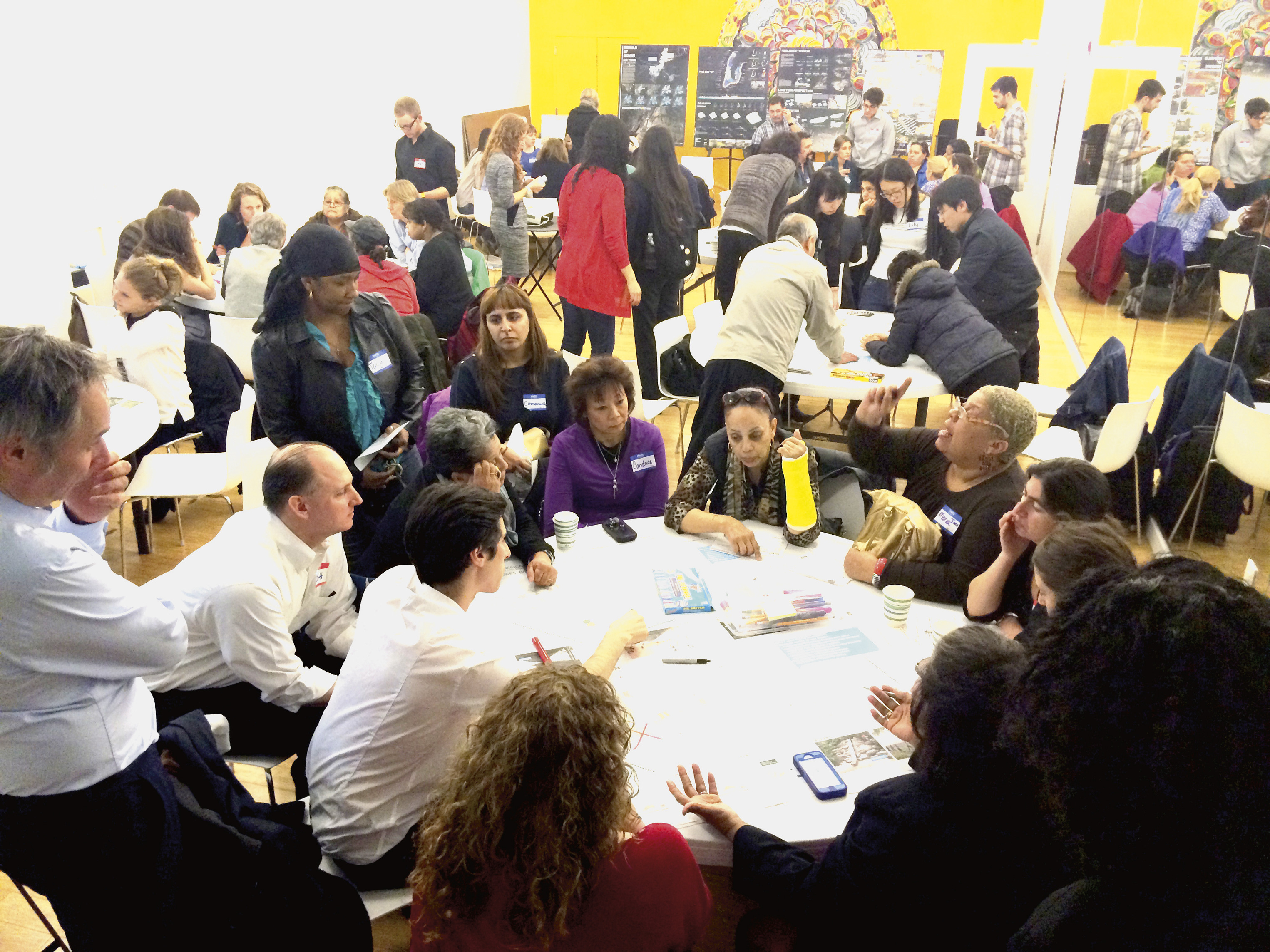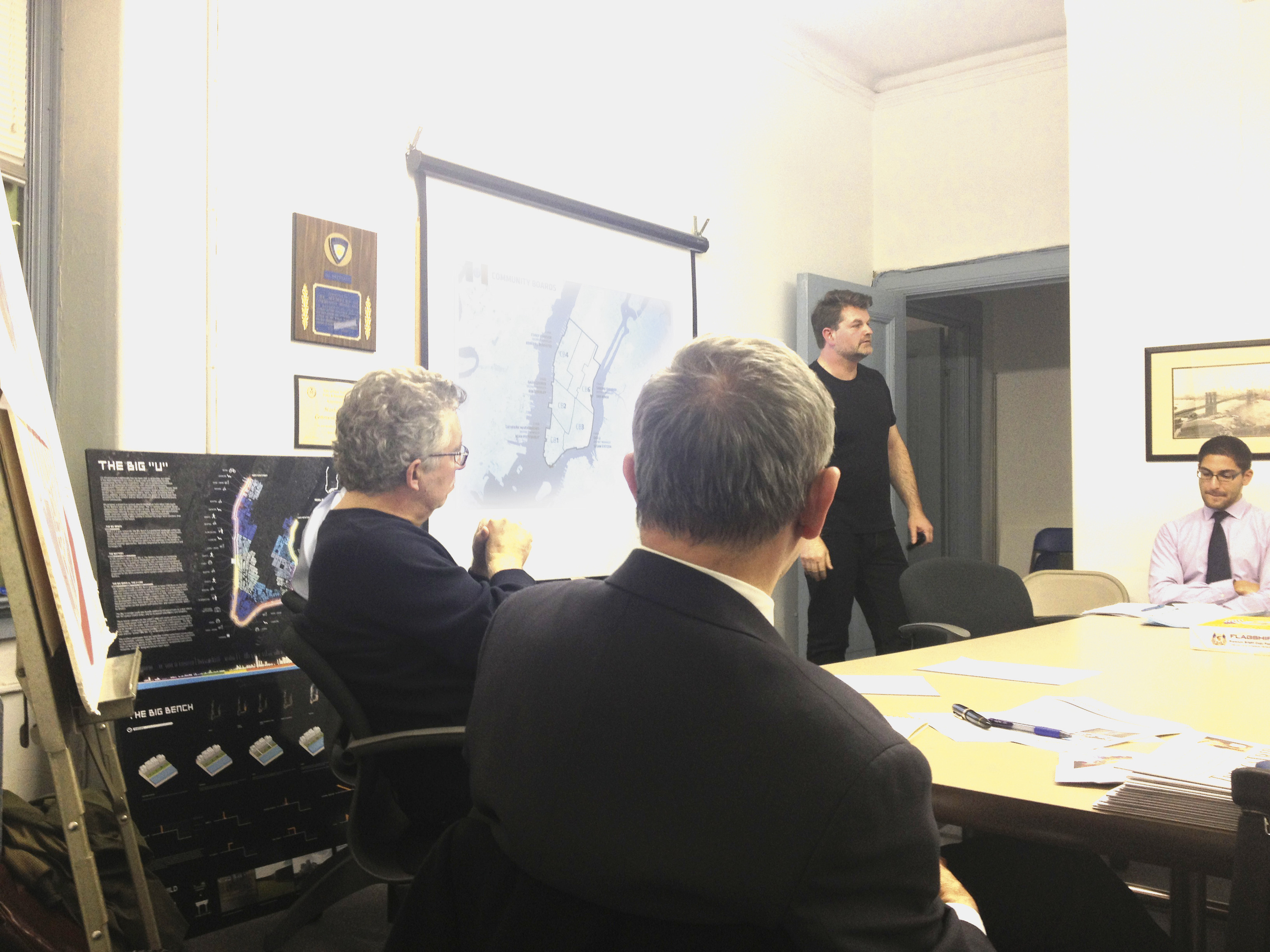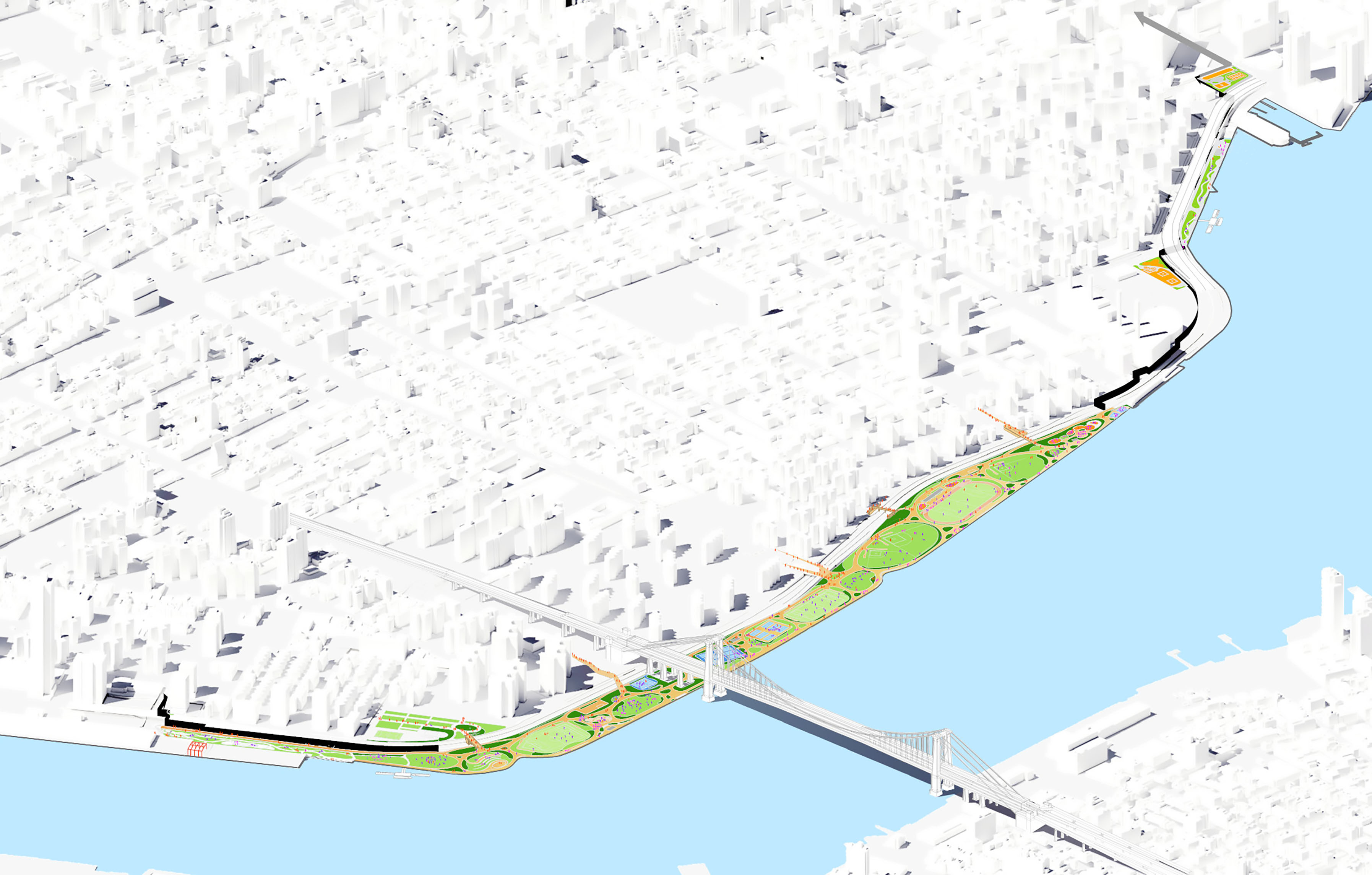STATUS
IN CONSTRUCTION
NEW YORK, UNITED STATES
CLIENT
City of New York | NYC Department of Design & Construction
TYPOLOGY
Urbanism
STATUS
IN CONSTRUCTION
SHARE
The East Side Coastal Resiliency (ESCR) project emerged from the U.S Department of Housing and Urban Development (HUD)’s Rebuild by Design competition, which sought to develop innovative design solutions to increase the resiliency of Sandy-impacted communities.
The 2.5-mile project area is located within the Federal Emergency Management Agency (FEMA) 100-year floodplain in Manhattan, spanning from Montgomery Street to East 25th Street along the East River. ESCR is designed to protect and improve the resiliency of the large and diverse residential community of more than 110,000 New Yorkers, including approximately 28,000 NYCHA residents. The project will also offer protection to critical infrastructure – including a major pump station and an electrical substation that powers much of Lower Manhattan – as well as numerous local schools and libraries.
To make the case for protecting Lower Manhattan, the BIG team conducted extensive quantitative and qualitative analyses – highlighting the impacts of Hurricane Sandy and projecting future risks to life, property, and economic activity.
Working with the city, BIG identified Manhattan’s east side as a priority area, which is home to more than 110,000 residents living in one of the largest reservoirs of public housing in the city. In addition, the area includes multiple critical public assets: Wall Street, the country’s economic epicenter; the South Street Seaport, one of its most significant historic districts; and extensive transportation infrastructure.
Over the course of the concept design, BIG held 11 public workshops and 40+ smaller stakeholder sessions, with more than 1,000 participants from the community and surrounding neighborhoods providing input.
The project is opening in phases, with New York City’s Mayor Adams announcing the completion of the first section of ESCR, between East 15th Street and the Asser Levy Playground, in 2024. This section, which encompasses Stuyvesant Cove Park, includes flood barrier walls and gates, a new dog run, ballfields, and other public amenities.
At Stuyvesant Cove Park, elevated open spaces work together with a new ferry landing and the Solar One Environmental Education Center, also designed by BIG, to create a vibrant waterfront. Deployable elements maintain views and access to the water at critical locations, ensuring continued connections between the neighborhood and East River.
Following the completion of ESCR’s first phase in 2024, the coastal redevelopment continued in 2025 with the reopening of several major sections within East River Park around the Williamsburg Bridge. Elevated an average of 8-9 ft to provide vital flood protection, the park has been infused with 600 new trees and over 21,000 shrubs, grasses, and perennials – strengthening the shoreline and enhancing ecological character. The park also features new basketball and tennis courts, picnic and BBQ areas, a multi-use turf field, grassy lawns, dedicated zones for nature exploration and water play, a new amphitheater, an extended esplanade, and two new pedestrian bridges at Delancey Street and Corlears Hook Park.
“Our coastal resiliency projects continue to create better recreational opportunities while protecting open space, this time with a new East River Park amphitheater plus tennis courts and better park access via the new Corlears Hook Bridge. The new East River Park areas also connect to Pier 42 to the south and the amenities built there in the last few years by NYC Parks and NYC EDC. Along with close to 3,000 new trees to be planted in the park and in surrounding communities, East Side Coastal Resiliency is creating better, greener, and safer neighborhoods for New Yorkers who need them.”
Taken together, the ESCR project builds physical, social, and economic resiliency, strengthening the city’s coastline while reestablishing public space, enabling outdoor gathering opportunities, and improving waterfront accessibility.
“With the opening of the first phase of East River Park, we see the first physical manifestation of a decade-long vision: an archipelago of parks forming an elevated, undulating new landscape - a 'Park-ipelago' if you will. Each island of green is devoted to a use and character decided by the community. Rather than separating the city from the waterfront, we’ve designed a public realm that invites people in with new connections across the FDR, transforming flood protection into a tapestry of everyday experiences. The result is infrastructure that not only strengthens but also enhances the city’s coastline. It protects, connects, and inspires - proof that the future of our cities can be both safe from flood and full of life."
Bjarke Ingels Kai-Uwe Bergmann Daniel Sundlin Beat Schenk Adam Poole Andreas Buettner Emmett Walker Erik Kreider Guillaume Evain Jamie Maslyn Larson Kam Chi Cheng Kate Cella Kayeon Lee Kelly Neill Margaret Tyrpa Veronica Acosta Max Moriyama Morgan Mangelsen Nasiq Khan Ryan Harvey Sang Ha Jung Stephanie Hui Seo Young Shin Taylor Hewett Terrence Chew Thomas McMurtrie Tracy Sodder Ziyu Guo Autumn Visconti Deb Campbell Isela Liu Jeremy Alain Siegel Agnieszka Majkowska Andreea Vasile Hoxha Aslan Taheri Athena Morella Benjamin Dinapoli John Sng Daniele Pronesti Douglas Breuer Douglass Alligood Emily Bauer Fiona Lu Gabriel Hernandez Solano Gaurav Sardana Jakub Kulisa James Donaldson Jessica Jiang Jonathan Hein Jonathan Ong Jordan Felber Juan David Ramirez Kalina Pilat Kurt Nieminen Lisbet Fritze Trentemøller Mai Lee Malcolm Rondell Galang Manon Otto Margaret Kim Mateusz Wieckowski-Gawron Maxime Le Droupeet Mo Li Nandi Lu Nicholas Potts Nicole Passarella Oliver Siekierka Ruicong Tang Simon David Taylor Burgess Taylor Fulton Vincenzo Polsinelli Wells Barber William Campion Yaziel Juarbe Yixin Li Chao-Wei Chiang Ania Agnieszka Podlaszewska Benjamin Caldwell Karolina Bouros Tammy Teng Juan Diego Perez Diez Alejandro Guadarrama
United States Military Academy Designer of the Year, 2024
APA NY, William H. White Award, 2014
AKRF & KSE
MNLA
ONE Architecture
Arcadis
Jacobs
Hardesty Hanover
Siteworks
Wesler Cohen
Hazen & Sawyer
Pentagram
Hortus Environmental Design
FHI Studio
Starr Whitehouse
James Lima Planning + Development






